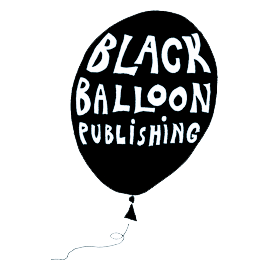
In Granta, Jaspreet Singh recently described how her mother, in translating the daughter’s book from English to Punjabi, “preserved the emotional impact” of the fourteen stories she had written, up until the final piece, which read very differently.
My mother translated the story I never wrote...This new fourteenth story was my mother’s story and not mine. No translator, no one has a right to change my story, I thought. Not even my mother.
It is a strange and unsettling thought that a translator might deliberately or, worse, unconsciously present us with a story only tangentially related to the original-language text. But what, exactly, do we feel if we realize that we've read a false or unfaithful translation? Loss? Rage? What exactly have we lost, if we cannot read the original, and where should we direct our anger, if we have been given something that otherwise we would not have had at all?
Translation is the last remaining vestige of rewriting; it is a career not unlike that of being a scribe in medieval times or a typist in the twentieth century. “There’s nothing glamorous about it,” my friend said of working as a translator at UNESCO in Paris. “I switch the words from French to English, make sure it sounds logical, and then pass it on to my reviser.”
Readers (and even editors!) often assume that a fluid translation is accurate, and reviewers consistently declare English-language books from abroad "ably translated," without much thought given to the underlying process. Even when the translation is read and annotated by the publisher, questions about the text are usually posed to the translator, rather than being answered by looking at the original. So rogue translations are all the more discomfiting when their dissemblances are discovered.
If the rewriting Jaspreet Singh’s mother performed feels like theft, then where do you draw the line between transducing something and traducing it? Are all translators thieves?
I detest the Italian adage “traduttore, traditore” ("translator, traitor" would be the most literal rendering). There is something available now in the target language whereas previously there had been nothing. That is no betrayal; indeed, it’s a gift. Sometimes the translation is for the better, as when writers like Paul Auster find themselves more famous abroad than at home. Really, attempting to moralize this recalls the recent (and inconclusive) brouhaha over facts and truth in John D’Agata and Jim Fingal’s The Lifespan of a Fact.
I don’t think a question so polarizing can be answered, and the futility of the thought itself only merits satire—as in this piece from Dezső Kosztolányi’s Kornél Esti, translated by Bernard Adams, about a kleptomaniac translator:
In the course of translation our misguided colleague had, illegally and improperly, appropriated from the English text £1,579,251, together with 177 gold rings, 947 pearl necklaces, 181 pocket watches, 309 earrings, and 435 suitcases...Where did he put these chattels and real estate, which, after all, existed only on paper, in the realm of the imagination, and what was his purpose in stealing them?
image credit: Igor Kopelnitsky, corbisimages.com

"Every once in a while you get the truth from a movie."
—Warren Beatty, 2012 Academy Awards
The Lifespan of a Fact, the new book by essayist John D’Agata and his fact-checker Jim Fingal, has caused a lot of ruckus. The book lays out an essay by D’Agata accompanied by the annotations of Fingal and their correspondence over seven years of working on the project. Fingal is intensely scrupulous when it comes to accuracy and facts, while D’Agata bristles under the procedures of nonfiction—he’s trying to accomplish something else. There's a lot at stake concerning fidelity to the facts,journalistic integrity, the expectations we have toward different forms of art...basically, the nature of truth itself.
Black Balloon’s forthcoming book, Louise: Amended, is a memoir that includes fictional interludes. In these interludes, author Louise Krug assumes the third-person POV and imagines the thoughts and emotions of her family members. This technique bucks the expected boundaries of the memoir form, but by including these other perspectives, Krug has arguably expanded the depth and scope of the memoir’s experience to include a truth larger than the narrator’s alone.
I think the debate concerning nonfiction’s relationship to truth could benefit greatly from the inclusion of texts written about truth and photography. Susan Sontag, Roland Barthes, John Berger and countless others (most recently, Errol Morris) have written about the nature of photography: its relationship to reality and time, the intricacies of what exists just beyond the frame, etc. If great artists and thinkers are still grappling with photography’s depiction of reality, isn’t it fair to assume that investigation into the nature of nonfiction’s depiction of reality is worthwhile?
One of the reasons I believe art to be so profoundly necessary is because it functions as a context in which the truth is possible. Or at least provides a context in which the truth is painstakingly sought after, if not quite achieved.
Truth is not always acquired by means of unveiling what already exists in the world. Sometimes, truth is achieved by sheer creation, brought about by something entirely new. I believe both truths—unveiled and created—to be absolutely necessary, and I would strongly oppose any restrictions or impediments to the exercise of either. If D’Agata is playing with a new context (or simply a context that has gone out of style) in which truth might be created, we might just want to pay attention.
image: grokzone.com






 A Black Balloon Publication ©
A Black Balloon Publication ©